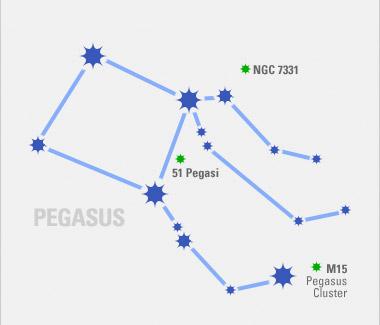

M15 is one of the most densely packed globular clusters in our galaxy, with a high number of variable stars and pulsars. Viewable with the naked eye from dark sites, binoculars and small scopes will bring out some detail of the collapsed, superdense core. M15 is also one of only a handful of globular clusters known to contain a planetary nebula.
NGC 7331, a Type 2 Seyfert galaxy about 43 million light-years away, shows a superb spiral structure.
51 Pegasi is an unexceptional 8th Mag star, but it's notable because it is orbited by the first true extrasolar planet to have been discovered.
November 2006






 /
/ 







